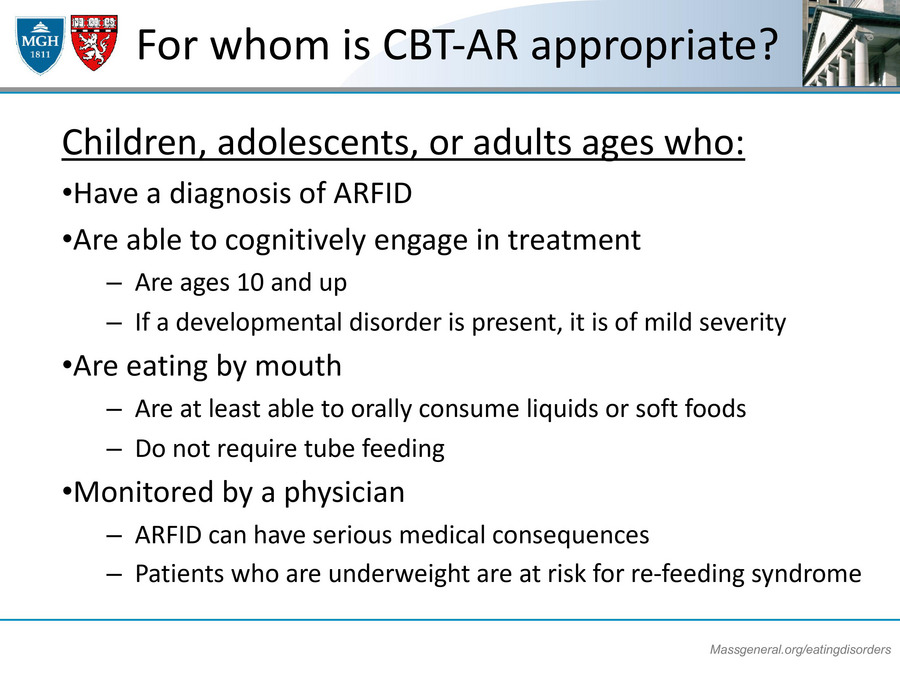How to Treat Patients with ARFID via Telehealth
Abridged transcript and slides
Presented by Dr. Jennifer Thomas (Massachusetts General Hospital) and Elissa Martinez LMFT (Recovery Record)
Access to the full webinar recording and all the slides are availabel from IAEDP.
Pages: 1 2 3 4 5 6 7 8 9 10 11
What is CBT-AR; and how can it be delivered via telehealth
And so really I just bring all of this up to highlight that I think that our food treatment should really target these mechanisms. We need to help people with their lack of hunger. We need to help people with their anxiety. And we need to help people with the fact that they might be a little extra sensitive to trying certain foods for the first time.
Cognitive Behaviral Therapy for ARFID (CBT-AR)
So that leads me to what is cognitive behavioral therapy for ARFID or CBT-AR, and how can it be delivered through telehealth? Okay. CBT-AR is a flexible modular treatment for children, adolescents, and adults that comprises about 20 sessions over four stages. The stages include psycho-education.

Tips on delivering CBT on eating disorders via telehealth
As we go through the protocol in what CBT-AR is, I'm going to be giving you guys some tips for how to deliver it over a telehealth. A lot of the tips actually come from a beautiful paper that Glenn Waller and his colleagues published in the international journal of eating disorders almost a year ago now. I'm highlighting this here because this is actually an open access paper. So even if you don't have a subscription to like a university library or to the IJED, you actually can download this totally for free. So I would really recommend checking out this article and I will be integrating tips from it. So it's called Cognitive-behavioral therapy in the time of coronavirus: Clinician tips for working with eating disorders via telehealth when face-to-face meetings are not possible.

For whom is CBT-AR appropriate?
For whom is CBT-AR appropriate? Well, we designed this treatment for children, adolescents, or adults who have ARFID, who are cognitively able to engage in treatment, who are ages 10 and up, who if they have a developmental disorder is fairly mild, who are eating by mouth and don't require tube feeding, and who are being monitored by a physician because, again, ARFID can have very serious medical consequences and patients can be at risk for re-feeding syndrome.
My first telehealth tip is that if you're going to be delivering this treatment completely virtually, which is actually what we're doing here in our clinic in Boston, we're doing all of it over an encrypted Zoom platform is that you want to make sure that even if you, as say the mental health clinician, are seeing the patient virtually, that there has been a medical evaluation that is in person and that's crucial both to establish how much the patient weighs, what their vital signs might look like. Maybe if they need some blood testing to look for nutritional deficiencies. And for patients who are very underweight and compromised, they might continue to need ongoing in-person medical monitoring even if, again, the mental health component is virtual.
